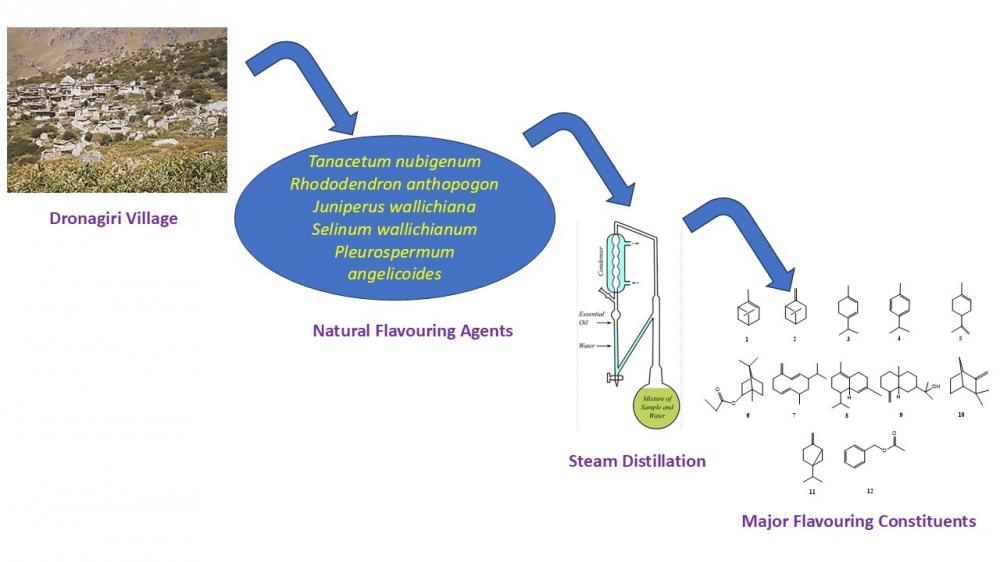JOURNAL 3551
Records of Agricultural and Food Chemistry
Year: 2025 Issue: 1 January-June
p.63 - 70
Viewed 1237 times.
GRAPHICAL ABSTRACT

ABSTRACT
The Indian Himalayan Region (IHR) is known for its distinct flora and fauna. Many aromatic plants from IHR are used in food preservation, as ingredients in food items, and in folk herbal medicines, and their fragrance is used to improve mood and relieve depression. In continuation with this, essential oils (EOs) of five selected aromatic plants from Dronagiri hills of Uttaranchal (India) were analysed by gas chromatography (GC-FID) and gas chromatography-mass spectrometry (GC-MS). Volatile oil of Tanacetum nubigenum Wall. contained β-eudesmol and isobornyl propionate as major compounds, Pleurospermum angelicoides (DC.) Klotzsch was found to contain p-cymene, camphene and α-asarone as major compounds; Rhododendron anthopogon D. Don was found rich in α-pinene, whereas germacrene-D and limonene were the major components of Selinum wallichianum (DC.) Raizada & Saxena, and Juniperus wallichiana Brandis were rich in β-pinene, sabinene, and α-pinene. Four out of five plant species were found to be rich in monoterpenoids, while one was noted for its abundance of oxygenated sesquiterpenoids. Tanacetum nubigenum, Pleurospermum angelicoides, and Selinum wallichianum are identified as chemotypes, while Juniperus wallichiana exhibits a composition similar to that previously reported. Several essential oils (EOs) derived from various traditional plants have demonstrated enhanced antimicrobial and antioxidant properties. They have also successfully extended the shelf lives of cereal products and improved the standard of food safety. Without compromising the quality, the main classes of essential oils (EOs), such as terpenes and aromatic volatile chemicals are crucial for food safety. Essential oils investigated may be used as alternative preservatives to extend the shelf life of grains and cereals, owing to their various properties, including antibacterial and antioxidant effects.
KEYWORDS- Essential oils
- chemotype
- monoterpenoids
- food preservative
- Dronagiri plants